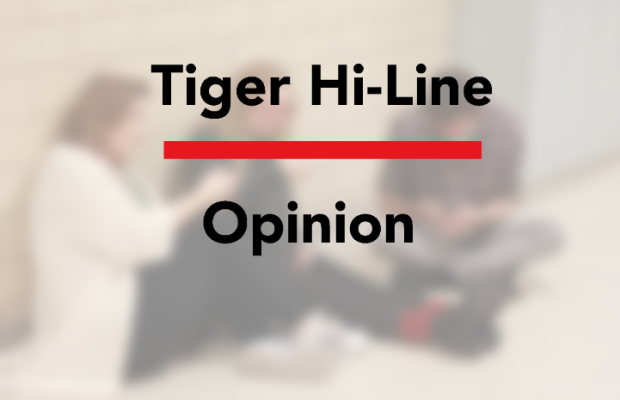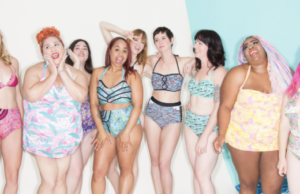Opposing side: Feminism

With Donald Trump winning the 2016 election, the scandals of Harvey Weinstein and other men, and, well, Donald Trump existing, it might seem like the United States needs feminism more than ever. However, that simply isn’t true.While feminism may be defined as a movement promoting the social, political and economic equality of the sexes, the movement has strayed far from what its founders intended. I’m going through the most repeated feminist talking points and debunking them: the wage gap, mansplaining/manspreading/manexisting, the so-called pink tax and internalized misogyny.wage gap not real. There are different pay gap statistics in every corner of the Internet, but most range from 75- 80 percent, and, sure, at first glance it can seem like the 22-ish cent gap between the earnings of men and women is patriarchy in practice, but there are many factors this simple number doesn’t take into consideration.What the statistic represents is the average earnings of women working full time compared to the average earnings of men working full time. What it does not account for are hours worked per week, position, occupation, education and the amount of time they’ve had that job. This means that both a man with a masters degree earning 170K a year and a woman with a high school degree working for Burger King would be treated as the same in calculating this statistic. Of course, they’re not going to be paid the same. A lot of this gap has to do with career choice. High-earning college majors, such as electrical engineering (89 percent male) and naval architecture and marine engineering (97 percent male), are overwhelmingly dominated by men. However, women are more likely to choose low-earning college majors, such as social work (88 percent female) and communication disorders science and services (94 percent female).This isn’t about a patriarchal conspiracy to leave women socioeconomically disadvantaged; it’s personal choice. Seemingly, the only way to even it out would be to force women into higher-earning career paths. Shoving women into lives they don’t want doesn’t seem particularly feminist to me. manspreading/mansplaining/hepeating
Manspreading~when a man spreads his legs apart in public and takes up space.
Mansplaining~when a man explains something to a woman.
Hepeating~when a man repeats a woman’s idea and takes credit for it.
What is this buffoonery? To be honest, I included these for their hilarity. Most of these came into feminism during the early 2010s through pop feminism outlets like BuzzFeed and Cosmopolitan. Manspreading, mansplaining and hepeating are far from the only ones, but they illustrate the concept well enough, which is that men doing things is bad. Firstly, manspreading. While it is technically true that men tend to spread their legs further apart than women, there’s a pretty good reason for it: testicles. Men have them.Onto the next. Mansplaining is a thing that occasionally happens, but it’s not exclusive to men. All genders have the ability to condescend and patronize. Hepeating emerged onto the face of the earth quite recently, at the end of 2017, and it hasn’t been used to the extent that manspreading or mansplaining have, but the concept has been around for a while. Basically, it states that women have ideas, and men steal them. Again, it applies to both genders, and we already have a word for it. That word is “repeating.” I wrote about these less because they actually matter and more because they represent the absurdity of third wave feminism.
pink tax (spoiler alert: not a thing that exists) Even if you haven’t heard of the catchphrase “the pink tax,” you’ve probably stumbled across the idea it encapsulates. The pink tax states that women pay more for basic items such as razors, deodorant and shampoo.
At the surface, this appears to hold up, but, much like the wage gap, it comes down to personal choice. See, if I want to buy men’s deodorant and smell like meat and sawdust, I can. If I want to buy a men’s razor and bleed to death (women’s razors tend to be more precise), I can. If I want to buy men’s shampoo, I have the right to do so, but I choose not to because I like it when my hair smells like coconut. Women’s products have more features. They’re more precise, they’re nicer smelling, they have a better graphic design, and all of that costs extra money to produce. Dove’s Clean & Fresh Anti-Dandruff 2-in-1 Shampoo costs $4.88 at Walmart and has 31 ingredients. Dove’s Men+Care Clean Fortifying 2-in-1 Shampoo costs $4.48 at Walmart and has 17 ingredients. You want the extra 14 ingredients? Pay the extra 40 cents and enjoy having nice hair. Choosing to buy expensive products because they make you feel better does not equal the patriarchy invading your local Bath & Body Works. Internalized misogyny. This is the grandmother of terrible feminist talking points. It asserts that after being oppressed by the patriarchy all their lives, women internalize certain misogynistic beliefs. Typically, this is used to shut down any woman who disagrees with feminism. Women who aren’t feminists are told they’re internalizing misogyny, being brainwashed into loving their own oppression because nothing screams female empowerment quite like silencing women who want to express themselves. In conclusion, modern feminism isn’t about strengthening women or fighting for equality in countries where women don’t have equal rights, it’s about blaming the “patriarchy” for minor inconveniences and making it hip and cool to feel oppressed.









You must be logged in to post a comment Login